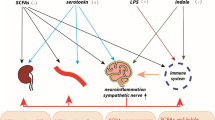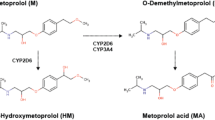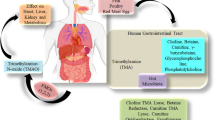Abstract
Hypertension is a public health concern. Low dose thiazide diuretics are known to effectively control blood pressure compared to that of other classes of antihypertensive drugs. In this context, we have performed an in-silico study and found that the two Sulphonamide Diuretics Hydrochlorothiazide and Indapamide bound the NADPH binding region of bacterial Dihydrofolate Reductase. Therefore, akin to Sulphonamide Antibiotics, Sulphonamide Diuretics may have antibiotic activity and thereby have the potential to modulate the gut microbiome in a way beneficial to vascular health. The in-silico experiment results were analyzed in the context of the relevant literature. We postulate that Sulphonamide Diuretics exert their antihypertensive role by modulating the gut microbiome, specifically by increasing butyrate-producing taxa in the gut. We recommend extending such work as it is plausible that Indapamide and other Sulphonamide Diuretics may be beneficial for both diabetes and hypertension.






Similar content being viewed by others
References
Abraham MJ, van der Spoel D, Lindahl E, Hess B, and the GROMACS development team (2018) GROMACS User Manual version 2018.4. http://www.gromacs.org/. Accessed 4 Nov 2020
Adnan S, Nelson JW, Ajami NJ et al (2017) Alterations in the gut microbiota can elicit hypertension in rats. Physiol Genom 49:96–104
Arima H, Barzi F, Chalmers J (2011) Mortality patterns in hypertension. J Hypertens 29:S3–S7
Borg MJ, Jones KL, Sun Z et al (2019) Metformin attenuates the postprandial fall in blood pressure in type 2 diabetes. Diabetes Obes Metab 21:1251–1254
Cao H, Gao M, Zhou H et al (2018) The crystal structure of a tetrahydrofolate-bound dihydrofolate reductase reveals the origin of slow product release. Commun Biol 1:226
Delano WL (2020) The pymol molecular graphics system. http://www.pymol.org [Internet]. [cited 2020 Sep 21]. https://ci.nii.ac.jp/naid/10020095229/. Accessed 4 Nov 2020
Elliott WJ, Weber RR, Murphy MB (1991) A double-blind, randomized, placebo-controlled comparison of the metabolic effects of low-dose hydrochlorothiazide and indapamide. J Clin Pharmacol 31:751–757
Escobar E (2002) Hypertension and coronary heart disease. J Hum Hypertens 16:S61–S63
Gabel SA, Duff MR, Pedersen LC, DeRose EF, Krahn JM, Howell EE et al (2017) A structural basis for biguanide activity. Biochemistry. Sep 12;56(36):4786–98
Inaba M, Noguchi Y, Yamamoto T et al (2004) Effects of a low dose of indapamide, a diuretic, given daily or every-other-day on blood pressure and metabolic parameters. Hypertens Res 27:141–145
Kuo S-W, Pei-Dee, Hung Y-J et al (2003) Effect of indapamide SR in the treatment of hypertensive patients with type 2 diabetes. Am J Hypertens 16:623–628
Landin-Wilhelmsen K (1992) Metformin and blood pressure. J Clin Pharm Ther 17:75–79
MacKerell AD Jr, Brooks B, Brooks CL III, Nilsson L, Roux B, Won Y, Karplus M (1998) CHARMM: the energy function and its parameterization. In: Schleyer PVR, Allinger NL, Clark T, Gasteiger J, Kollman PA, Schaefer HF III, Schreiner PR (eds) Encyclopedia of computational chemistry. Wiley, Chichester, pp 271–277
Maniar K, Moideen A, Mittal A et al (2017) A story of metformin-butyrate synergism to control various pathological conditions as a consequence of gut microbiome modification: genesis of a wonder drug? Pharmacol Res 117:103–128
Majithiya JB, Balaraman R (2006) Metformin reduces blood pressure and restores endothelial function in aorta of streptozotocin-induced diabetic rats. Life Sci 78:2615–2624
McAdams DeMarco MA, Maynard JW, Baer AN et al (2012) Diuretic use, increased serum urate levels, and risk of incident gout in a population-based study of adults with hypertension: the Atherosclerosis Risk in Communities cohort study. Arthritis Rheum 64:121–129
Morris GM, Huey R, Lindstrom W, Sanner MF, Belew RK, Goodsell DS, Olson AJ (2009) Autodock4 and AutoDockTools4: automated docking with selective receptor flexiblity. J Comput Chem 16:2785–91
Mortensen FV, Nielsen H, Mulvany MJ et al (1990) Short chain fatty acids dilate isolated human colonic resistance arteries. Gut 31:1391–1394
Muntzel MS, Hamidou I, Barrett S (1999) Metformin attenuates salt-induced hypertension in spontaneously hypertensive rats. Hypertension 33:1135–1140
Pluznick JL (2017) Microbial short chain fatty acids and blood pressure regulation. Curr Hypertens Rep 19:25
Qi Y, Aranda JM, Rodriguez V et al (2015) Impact of antibiotics on arterial blood pressure in a patient with resistant hypertension—a case report. Int J Cardiol 201:157–158
Raja R, Kavita F, Amreek F et al (2019) Hyperuricemia associated with thiazide diuretics in hypertensive adults. Cureus 11(8):e5457. https://doi.org/10.7759/cureus.5457
Roush GC, Sica DA (2016) Diuretics for hypertension: a review and update. AJHYPE 29:1130–1137
Reeves DS, Bint AJ, Bullock DW (1978) Use of antibiotics. Sulphonamides, co-trimoxazole, and tetracyclines. BMJ 2:410–413
Sawaya MR, Kraut J (1997) Loop and subdomain movements in the mechanism of Escherichia coli dihydrofolate reductase: crystallographic evidence. Biochemistry 36:586–603
Scriabine A (2007) 6.32—hypertension. In: Taylor JB, Triggle DJ (eds) Comprehensive medicinal chemistry II. Elsevier, Oxford, pp 705–728
Sharabi Y, Grossman E, Nussinovitch N et al (1996) Indapamide—a substitute diuretic for hypertensives with hyperglycemia and/or dyslipidemia. Harefuah 131:233–236
Turner PJ, Grace XM (2005) Version 5.1.19. Center for coastal and land-margin research. Oregon Graduate Institute of Science and Technology, Beaverton
Vallianou NG, Stratigou T, Tsagarakis S (2019) Metformin and gut microbiota: their interactions and their impact on diabetes. Hormones (Athens) 18:141–144
Wood WB (1942) Studies on the antibacterial action of the sulfonamide drugs. J Exp Med 75:369–381
Wulffelé MG, Kooy A, Lehert P et al (2005) Does metformin decrease blood pressure in patients with Type 2 diabetes intensively treated with insulin? Diabetics Med 22:907–913
Yang T, Santisteban MM, Rodriguez V et al (2015) Gut dysbiosis is linked to hypertension. Hypertension 65:1331–1340
Zhang X, Zhao Q (2016) Association of thiazide-type diuretics with glycemic changes inhypertensive patients: a systematic review and meta-analysis of randomizedcontrolled clinical trials. J Clin Hypertens (Greenwich) 18:342–351
Zoete V, Cuendet MA, Grosdidier A, Michielin O (2011) SwissParam, a fast force field generation tool for small organic molecules. J Comput Chem 32(11):2359–68. https://doi.org/10.1002/jcc.21816 (PMID: 21541964)
Acknowledgements
SK and DB acknowledge PGIMER, Chandigarh for providing financial assistance vide Endst No. PGI/MERC/2020/4655-58 dated 7.10.2019 (Collectively) and No. 71/2-Edu-16/415 dated 23.1.2019.
Author information
Authors and Affiliations
Corresponding authors
Ethics declarations
Conflict of interest
The authors declares that they have no competing interest.
Additional information
Publisher's Note
Springer Nature remains neutral with regard to jurisdictional claims in published maps and institutional affiliations.
Electronic supplementary material
Below is the link to the electronic supplementary material.
40203_2020_56_MOESM1_ESM.tif
S1. Molecular Dynamics (MD) simulation results of the DHFR-Drug complexes after 10 ns are presented. The codes of different drugs used in the graphs are et- Ethacrynic acid, sd- Sulphadiazine, in- Indapamide and hy- Hydrochlorothiazide
40203_2020_56_MOESM2_ESM.tif
S2. The superposed drug-DHFR complexes ((a)-Ethacrynic, (b)-Sulphadiazine, (c)-Indapamide and (d)-Hydrochlorothiazide) after docking and Molecular Dynamic (MD) simulation are shown. After docking in cyan cartoon – DHFR and red stick – drug, while after MD simulation in silver cartoon – DHFR and blue stick – drug are shown
Rights and permissions
About this article
Cite this article
Kaur, S., Bhattacharyya, R. & Banerjee, D. Hydrochlorothiazide and Indapamide bind the NADPH binding site of bacterial Dihydrofolate Reductase: results of an in-silico study and their implications. In Silico Pharmacol. 8, 5 (2020). https://doi.org/10.1007/s40203-020-00056-9
Received:
Accepted:
Published:
DOI: https://doi.org/10.1007/s40203-020-00056-9




